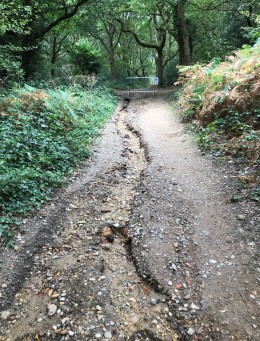Commons Update October 2019
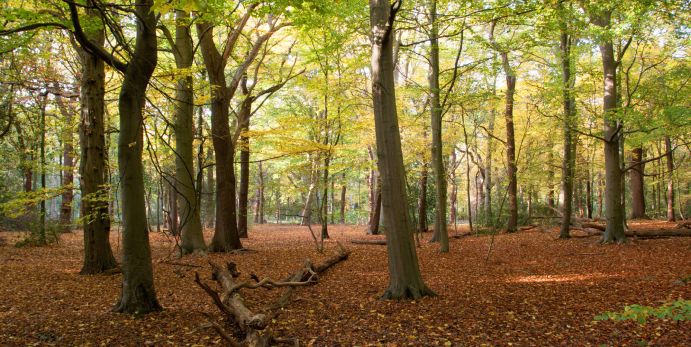
The past few months have been incredibly busy for our staff, not least with preparation for our showcase event - the annual Wimbledon and Putney Commons Open Day taking place in early September.
And what an event that turned out to be!
We were blessed in having beautiful weather and this drew the crowds in their thousands - estimates put the number of visitors over the course of the day at over 10,000.
True to the Open Day’s origins, which date back over 20 years, the event maintained its ethos of being a local event for local people; meeting the horses and the Keepers in the Stable Yard remained as popular as ever, as did the now infamous Wacky Dog Show which ended the day. Along with the many local charity and business stalls, visitors enjoyed craft demonstrations, riding and dog-handling displays and an amazing display by the birds of prey team - lying on the ground, camera in hand with an Eagle Owl heading straight for her is one moment that one member of our staff won't forget!
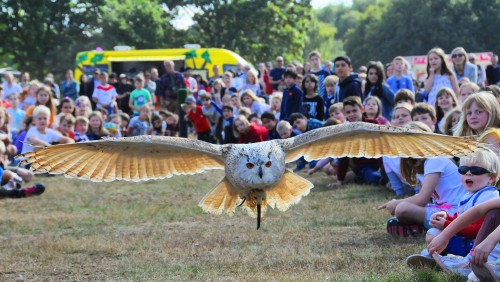
All the staff would like to take this opportunity to thank everyone that came along and supported the Open Day - however much work we all put into the day, without our visitors and participants the day would not have been the success that it was. Thank you!
Invasive Species Control
Over the past few months, the Maintenance Team have been involved in the control of two different invasive plant species on the Commons. Japanese knotweed and Himalayan Balsam.
Japanese Knotweed is a fast growing non-native perennial which produces bamboo like stems up to a height of 2 metres (approximately 7ft). Under the provisions made within Schedule 9 of the Wildlife and Countryside Act 1981, it is an offence to allow Japanese Knotweed to grow in the wild and therefore whenever this plant is identified on the Commons its location is entered into a specific data base and herbicide treatment is carried out as soon as possible.
The most effective method of controlling Japanese knotweed is through the use of a herbicide that is able to travel through the plant and kill the extensive system of rhizomes and this work is generally carried out by the Maintenance Team during late summer.
Himalayan Balsam is another non-native invasive plant species which is listed on Schedule 9 of the Wildlife and Countryside Act 1981 and, again, it is an offence to plant or allow this species to grow in the wild.
Growing rapidly, Himalayan Balsam can grow to a height of between 2 and 3 metres in one season, spreading quickly and smothering other vegetation beneath it. Affecting wetland areas such as river banks, each plant can produce up to 800 seeds which are dropped or fired into the watercourse resulting in the contamination of land downstream.
Our team remove the Balsam simply by pulling it out by the roots. With it being so close to the water course, spraying is not an option.
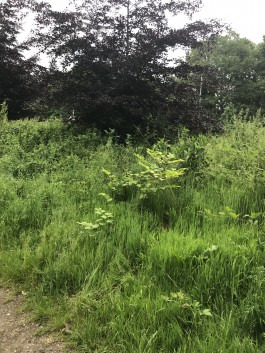
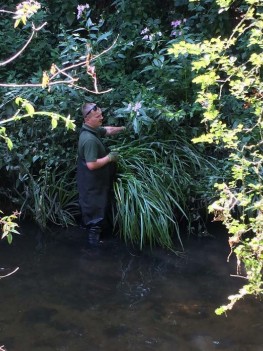
Japanese Knotweed and Himalayan Balsam
Meadow Work
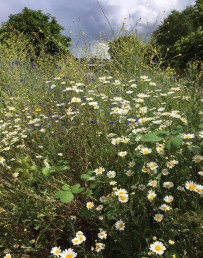
As part of the Commons’ summer grassland management, the Maintenance Team have carried out work around the meadows and surrounding areas at Putney Lower Common, the Crossroads Meadow and a small grassland site near the Roehampton War Memorial on Putney Heath and the small meadow site near the Southern Pound on Wimbledon Common.
On Wimbledon Common and Putney Heath, this work is carried out annually with the aim of improving certain grassland sites which, over the years, have become fairly rank and de-graded.
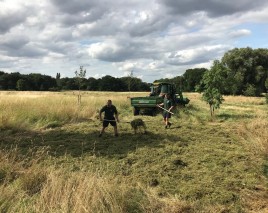 While this is also partially the aim of the work on Putney Lower Common, the main object of our meadow work on this site is to maintain the wild flower meadow that was established as part of the development of the Oasis Academy back in 2016. This year has been the second year where grasses and wildflower seeds cut from the meadow have been spread across an area of cut grassland on the main area of Putney Lower Common. In time, it is hoped that wild flowers will start to spread across this largely degraded grassland site.
While this is also partially the aim of the work on Putney Lower Common, the main object of our meadow work on this site is to maintain the wild flower meadow that was established as part of the development of the Oasis Academy back in 2016. This year has been the second year where grasses and wildflower seeds cut from the meadow have been spread across an area of cut grassland on the main area of Putney Lower Common. In time, it is hoped that wild flowers will start to spread across this largely degraded grassland site.
Path and ride restoration work
Although the Commons have been desperate for rain to help top up the ponds and keep the vegetation fresh, when the rain eventually came it came in style.
While many of the Commons’ paths and rides were badly affected by the sudden and heavy downpour of rain, the worst affected areas were Robin Hood Ride and both of the Gravelly rides, where much of the surface was washed away leaving deep trenches.
The rides had to be closed for use by horseriders as they were simply too dangerous to use. Our Maintenance Team had to be pulled away from their regular work and start repair work immediately. The severity of the damage was such that the rides remained closed for nearly week and required significant restoration.
But, as always, the team rose to the challenge and got the job done!
Volunteering on the Commons
Over the past summer, volunteers have continued to play a huge part in the day to day management of the Commons. With activities including litter picking, scrub bashing, wildlife surveying, guided walks, administration, fencing and help with the Commons’ annual Open Day, volunteers have been crucial in helping to promote and conserve the Commons.
Litter Picking:
When it comes to litter picking, over the past few months out Conservation and Engagement Officer commented "I think that almost every single area across Wimbledon and Putney Commons has been visited by one of our many volunteer litter picking groups. With organised litter picking events carried out by local residents groups, the Women’s Institute, the RSPCA, local businesses, the Windmilers Running Club and children from the local ‘Our Lady Queen of Heaven Roman Catholic Primary School’, the Commons have never been so clear of litter"
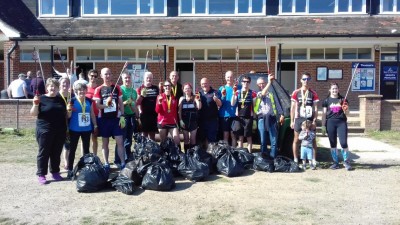
The Windmilers Running Club followng a recent litter pick
As part of any mention about litter picking on the Commons, it goes without saying that a huge thank you always goes out to members of the Commons’ Adopt an Area litter picking initiative. Without the tireless involvement of this group of people the Commons’ certainly wouldn’t look as fantastic as they do today.
Wildlife Volunteering
We are very fortunate on the Commons to have a number of active wildlife recorders whose observations throughout the year help influence the various ways in which we actively manage the Commons. From butterfly and dragonfly recording through to birds and small mammals, all sightings of wildlife on the Commons are always very welcome.
Although there are a number of people involved with wildlife recording on the Commons, one of our most regular contributors is Adrian Podmore who is responsible for providing regular updates about the birds of Wimbledon and Putney Commons. Here is his latest report:
Latest Bird Sightings July to August 2019 (Adrian Podmore)
Common Buzzard: regular sightings with a maximum of three reported over The Plain 9th July
Hobby: one over Rushmere 13th August, two over Gravel Pit Cottage 24th and 27th August and one over Mounds 30th August
Black-tailed Godwit: a lady sent in two photos of a bird wading in the shallows at Rushmere at 11.30am on 5th August
Stock Dove: a good record of 16 feeding on The Plain 28th August
Swift: two over Gravel Pit Cottage on 15th August
Kingfisher: Reports of Kingfisher at Beverley Brook during July and August
House Martin: only one sighting with 20 heading south over Rushmere 30th August.
Swallow: two pairs at the Windmill stable yard with nests of 2 and 4 youngsters. Pied Wagtail: a good count of 14 at Rushmere on 30th August with several juveniles.
Willow Warbler: first returning bird was at the Mounds 13th August and one singing weakly at Ladies Mile 20th August.
Spotted Flycatcher: two birds at the Mounds 22nd August and a single bird there 30th August
Wheatear: just one on 17th August
House Sparrow: an encouraging sighting of 20 on the muddy bank of Rushmere 20th August possibly feeding on willow seeds.
Goldfinch: a very good record of 80 on the Mounds 13th August, easily double the normal flock size seen most years. It seems Goldfinches may have had a bumper breeding season with the majority of birds being juveniles.

